Just read a great white paper from iContact that listed out the top 10 days to send holiday emails (dates based on 2009 calendar so note that some days may actually change from year to year but the principle is the same.) Nice timing and I thought I’d pass them along to you:
Monday after Halloween
Nov 2nd
Day before Thanksgiving
Nov 25th
Black Friday
Nov 27th
Cyber Monday
Nov 30th
First Friday in December
Dec 4th
Second Friday in December
Dec 11th
Friday before Christmas
Dec 18th
Monday before Christmas
Dec 21st
Day after Christmas
Dec 26th
Monday after Christmas
Dec 28th
Don’t wait to get started. Plan your emails now to ensure you are ready to take advantage of each.
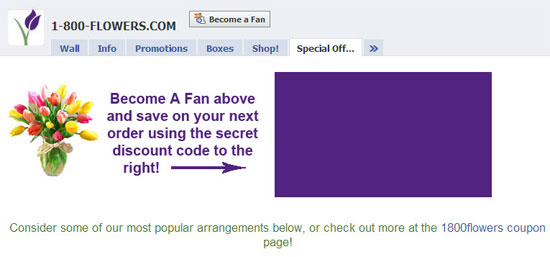 What works about this technique is that you’re not too overwhelmed by all of the “flair’ on the main wall or Fan page. You can chose not to become a fan and instead skip to the Wall.
What works about this technique is that you’re not too overwhelmed by all of the “flair’ on the main wall or Fan page. You can chose not to become a fan and instead skip to the Wall. 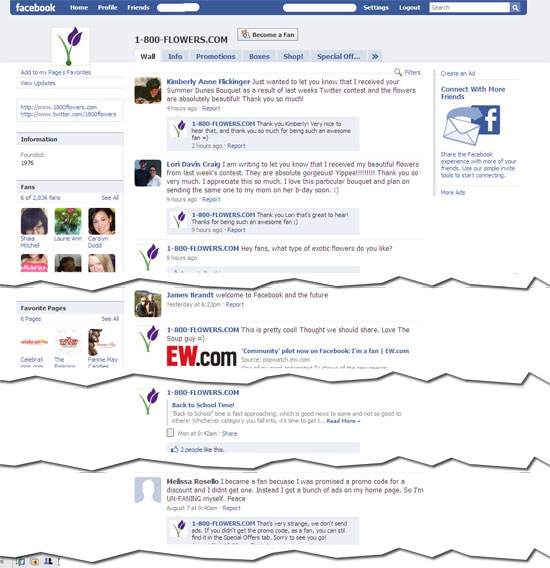 Using simple social media strategies, the folks at 1-800-Flowers have engaged their customers by responding to their posts and making their “Fans” feel appreciated. It’s a win-win situation for the e-retailer when you have Fans paying you a compliment and in turn show them your appreciation. Aside from a few simple notations about their URL and Twitter address, most of the work on page is done by the fans.
Using simple social media strategies, the folks at 1-800-Flowers have engaged their customers by responding to their posts and making their “Fans” feel appreciated. It’s a win-win situation for the e-retailer when you have Fans paying you a compliment and in turn show them your appreciation. Aside from a few simple notations about their URL and Twitter address, most of the work on page is done by the fans. 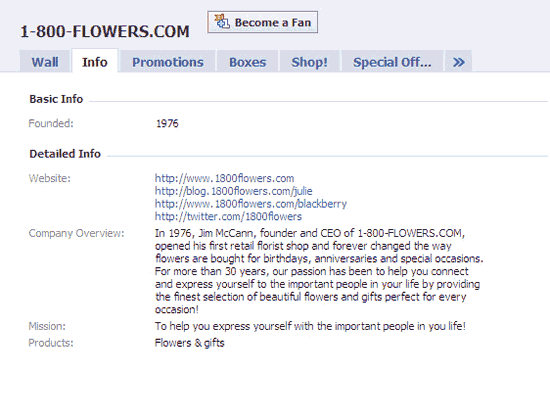 The Info page for 1-800-Flowers.com is careful not to be too boastful with their product which is a welcome sight to most consumers. A little information can go a long way and 1-800-Flowers does a good job telling you who they are (in case you didn’t know already), what their mission and products are as well as other social media outlets you can find them.
The Info page for 1-800-Flowers.com is careful not to be too boastful with their product which is a welcome sight to most consumers. A little information can go a long way and 1-800-Flowers does a good job telling you who they are (in case you didn’t know already), what their mission and products are as well as other social media outlets you can find them. 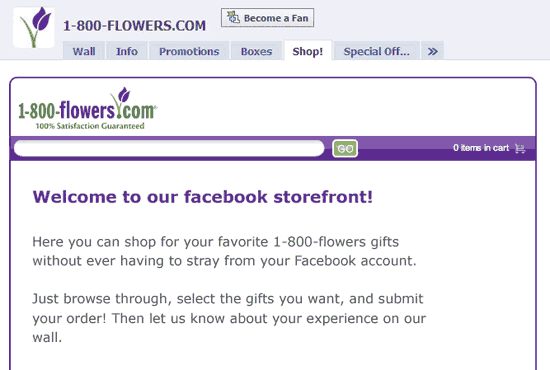
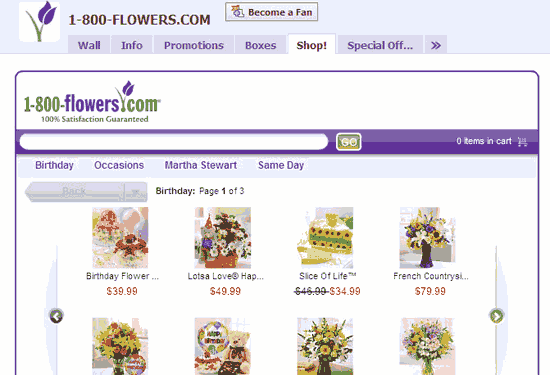 What has put 1-800-Flowers.com on the map for their Facebook experiment is the storefront they’ve “opened” on Facebook. Using the coupon code you obtained when you first came to the site, you can shop 1-800-Flowers.com’s inventory without ever having to leave the site. Should you enjoy your shopping experience, you can head back over to the Wall/Fan Page and post a short update about your positive experience.
What has put 1-800-Flowers.com on the map for their Facebook experiment is the storefront they’ve “opened” on Facebook. Using the coupon code you obtained when you first came to the site, you can shop 1-800-Flowers.com’s inventory without ever having to leave the site. Should you enjoy your shopping experience, you can head back over to the Wall/Fan Page and post a short update about your positive experience.